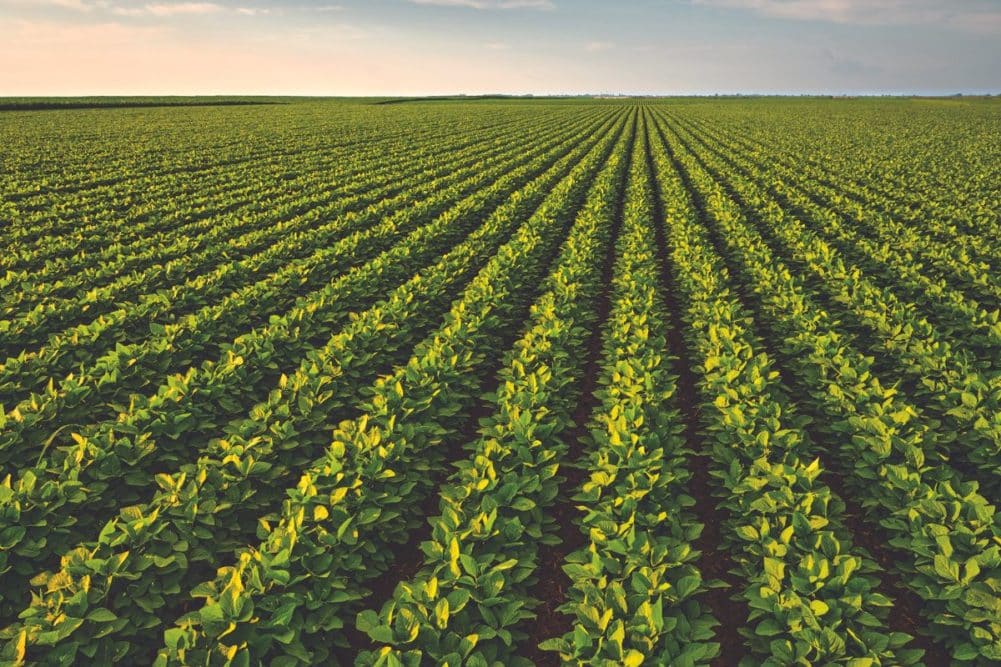
The popularity of soybeans with US producers, as they plant for 2024-25, has put pressure on prices, particularly following an upward revision to the US Department of Agriculture’s (USDA) planted area forecast. Big Brazilian and Argentine production at the same time as softening Chinese demand also contributed to the forecast.
In a paper, “Grains and Oilseeds Outlook for 2024,” published Feb. 15 at the Agricultural Outlook Forum 2024, the USDA said: “Soybean area is expected to increase as demand for soybeans in the United States is expected to be driven by stronger demand for domestic crush — largely driven by growth in biofuel use — while exports likely face competition from supplies in South America during the 2024-25 US marketing year.”
In its Feb. 19 Arable Market Report, the UK’s Agricultural and Horticultural Development Board said that “pressure continued on Chicago soybeans futures (May 2024) as the contract ended down 1.2% across the week, closing Friday at $432.15 per tonne.”
“Adding to price pressure was improved South American crop prospects, lacklustre demand and insight into 2024-25 US soybean plantings,” the AHDB explained. “Widespread rains across Argentina’s agricultural region over the last seven days has bolstered the soybean supply outlook.
“Many agricultural consultancies peg this crop at 50 million tonnes or more; the Buenos Aires Grain Exchange estimates the crop at 52.5 million tonnes. Weather throughout the end of January and February has been ideal for growing conditions. This large crop is outweighing some of the crop losses from Brazil.”
At the same time, “demand has been weakening from China as a shrinking pig herd reduces demand for animal feed,” the AHDB said, noting that US soybean export sales for 2023-24 (through Feb. 8) were estimated at 340,800 tonnes up 4% from the previous week, but sales are down 23% from the prior four-week average, and at the low end of trade estimates of 300,000 to 800,000 tonnes.
The AHDB also cited the National Oilseed Processors Association (NOPA) for the January US soybean crush figures at 5.1 million tonnes, explaining that “this is down 4.9% in comparison to December’s record and more than was expected, but the January 2024 figures remain up 3.8% from a year ago.”
Rapeseed performed better, supported by crude oil, but also helped by a report that Ukraine’s combined harvest of grains and oilseeds could fall 15% to 20% in reduced areas.
“With supplies of EU rapeseed anticipated to be lower for the 2024 harvest, this reduction from Ukraine could further tighten the oilseed/vegetable oil market as Ukraine is a large supplier to the EU market,” it said.
The United Nations Food and Agriculture Organization (FAO) said in its Food Price Index, published Feb. 2, that world vegetable oil prices in January 2024 were up by just 0.1% from the previous month but still 12.8% down from the level a year earlier, in January 2023.
“The steadiness in the price index month-on-month reflected the combined effects of higher global palm and sunflower seed oil prices offsetting lower soy and rapeseed oil quotations,” the FAO said. “International palm oil prices increased moderately in January, primarily underpinned by seasonally lower production in major producing countries and concerns over unfavourable weather conditions in Malaysia.
“Meanwhile, world sunflower seed oil quotations increased, driven by increased import demand, particularly from Turkey. By contrast, international soy and rapeseed oil prices declined because of prospects for large supplies from South America and lingering ample availabilities in Europe.”
